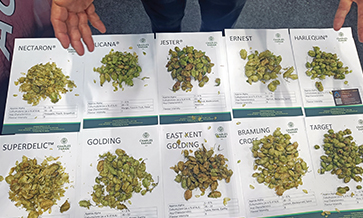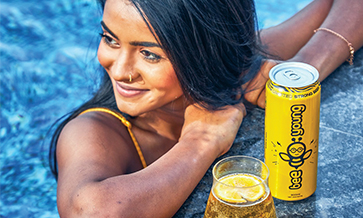Jacob’s Creek is one of Australia’s leading global wine brands, with drinkers enjoying approximately 1.7 million glasses of its wines across the globe each day. Dan Swincer, its Chief Winemaker, is responsible for the style and quality of the iconic wines that are sold in 77 countries. In a freewheeling interview with Rohit Arora of Tulleeho, he talks about his love affair with wine and the exciting future for the industry in India.
When and where did you get to taste your first vintage?
My first vintage was in 2003 at a small winery in the Barossa while studying at university. This was my first real experience in a winery and it really opened my eyes to the industry. It was also great fun – wineries are always full of interesting characters!
How was the 2018 Australian harvest for the industry in general?
In Australia, particularly South Australia, we had a warm dry vintage with average yields in 2018. These conditions were perfect for keeping vines healthy and ensuring smooth, even ripening of grapes. As a result it was a great year for red wines across the board, for all regions and varieties. For white wines, 2018 was a standout year for Chardonnay.
Vintage 2019 is in a few months. How promising does it look?
Australia is an enormous country and we’ve seen severe drought and floods on the eastern coast. For the regions where grapes for Jacob’s Creek are grown, conditions leading into the 2019 harvest have been very dry; but this is managed with careful irrigation to ensure the vines stay healthy and can produce good quality fruit.
Generally speaking, things are shaping up nicely for vintage 2019. However, it depends what the summer brings. We are hopeful for warm dry conditions with no prolonged heat waves or unseasonal heavy rain.
Could you tell us something about emerging global wine making and consumer trends?
From a wine making perspective, we are seeing a trend towards techniques and grape varieties that result in softer tannin structure, less oak influence and lower alcohol contents for some red wines. I think this follows from consumer preferences growing toward light and fresh styles.
Of course, there is always going to be a place for traditional wines made from the well-known varieties of Cabernet Sauvignon, Chardonnay, Shiraz, Pinot Noir and Sauvignon Blanc. These remain extremely popular, especially with those who are highly engaged in the world of wine.
Jacob’s Creek has come into India in a big way. What does the future hold for Indian wine consumer?
I see the wine industry in India growing rapidly over the next 5 years as middle class wealth grows. This will attract more wine producers to the market, which is advantageous for wine drinkers in terms of having more choice.
However, as the market matures, there will be higher expectations on wine makers, retailers and suppliers, and hopefully this will bring improved distribution methods to ensure the wine quality is upheld with temperature-controlled transport and storage.
We are excited to be bringing a new product to India, called Jacob’s Creek Double Barrel, which is wine finished in whiskey barrels. These innovations will ensure we keep engaging with more sophisticated wine drinkers by offering them something of exceptional quality that is also a unique proposition.
What would your advice be to young Indian wine makers?
Firstly, be curious. Taste a lot of wine from everywhere in the world and understand how they were made. Then you can create your own unique expression of Indian wine.
Secondly, taste your own wines critically all the time, to see how they evolve and examine whether they turn out as you expected. Always challenge what you are doing and why you are doing it – there is no room for complacency.
Every wine maker needs to understand his/her vineyards – be they estate vineyards or private growers – because one needs to know the potential of each parcel of fruit.
Finally, have a clear vision for what wine you want to craft. Have an end point in mind for each wine before you even harvest the grapes. This will inform all the decisions you make, right from the vineyard to the final presentation of your wine to the end drinker.
How big is the challenge from global warming?
Over the last 15 years we in Australia have seen the timing of our harvest coming earlier across all regions. In terms of wine style, we uphold our quality and style carefully by ensuring an excellent understanding of each vineyard site, monitoring them closely during ripening, and adjusting the way the vines are managed.
However, because of global warming there are two challenges that Australian wine makers need to keep in mind: one is reviewing which grape varieties will be best in the future; and ensuring we secure sufficient water for grape-growing versus competing uses – agricultural or otherwise.
What is your favourite wine and Indian food pairing?
I mainly stick to curries when cooking Indian food at home. I suggest a nicely balanced Chardonnay with butter chicken. The fruit-driven reds, such as Shiraz or Grenache, go well with Rogan Josh. Ideally you don’t want wines with high tannins with hot chilli because it tends to exacerbate the heat.
What are your favourite red and white grapes and why?
From a wine making perspective my favourite wines to make are Chardonnay and Shiraz – Chardonnay for the many ways wine makers can influence the outcome, and Shiraz for how differently it expresses itself when grown in different conditions.
For Chardonnay, it is such a fun variety to make because there are no many options in terms of wine making techniques – fruit sourcing, picking technique, how you press the grapes, what percentage of malolactic fermentation, whether you leave it mature on yeast lees, and the type and amount of oak influence.
For Shiraz, we have such a diverse range of high quality wines coming from different regions, from cool climates through to warm and hotter climates.
Shiraz is a flexible variety in that it can produce wines that can be released young and supple with early drinking appeal, but can also produce wines with great aging potential. It is important that we change people’s expectations globally of what Australian Shiraz is and can be.
Could you tell us about Jacob’s Creek Double Barrel?
This innovative Jacob’s Creek Double Barrel range has been available in Australia since 2014 and has been a tremendous success. The process first involves producing premium wines and aging them in traditional wine barrels of well-seasoned, fine-grained French and American oak barrels.
The unique twist of Jacob’s Creek Double Barrel is that we then prepare the blend and finish it in whisky barrels for a short period to soften and smooth out the tannin profile, creating a richer, deeper and smoother wine.
In the case of the Shiraz we source grapes from premium regions to give a densely flavoured and structured wine that is aged for 12 to 18 months in traditional 300-litre fine-grained oak barrels before being finished for 8 to 12 weeks in Scotch whisky casks.
For Double Barrel Shiraz our vision was clear from the start – we wanted to express the unique character of aging in whisky barrels, but not make it taste like whisky. I am sure wine drinkers in India will enjoy the smooth, rich flavours of Double Barrel and add an exciting new level of interest for Jacob’s Creek in India.
How important is wine education in the context of a country like India?
Wine has not been part of Indian culture for centuries. Sometimes people can be intimidated by the complexity of the wine world. In this case, wine education is very important to help people become more comfortable.
As a wine maker I want people to have the best possible experience when drinking our wine, and structured training can also help people identify when a wine has a fault or is no longer in the condition in which the maker intended.














